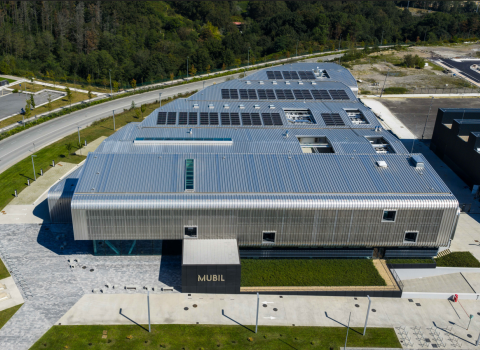
More is to come, since the Commission has committed to increasing the ICT research budget by a further 20 per cent each year up to the end of Framework Programme 7 in 2013. And speaking at the opening of the conference Neelie Kroes, head of the Digital Agenda, told the 6,000 delegates she will make “a very strong case for even stronger levels of support,” in FP8.
Partial breakdown by sector of the EU’s latest €780 million call for proposals:
€120 million to fund R&D in networking, digital media and service infrastructure for the future Internet
More than €200 million for research in electronic systems and photonic components
Almost €200 million for research in ICT for health and ageing
€135 million for ICT research to improves energy efficiency in buildings, transport and logistics
Jim Hagemann Snabe, co-CEO of one of Europe’s leading ICT companies, SAP AG, agreed that more public-private partnerships are needed to encourage investment in research, “In an orchestrated way.”
But the problem is making these partnerships work, as Kroes was forced to acknowledge. A recent examination of two such flagship collaborations, the Eniac nanoelectronics project and Artemis, which is working on embedded system, found the momentum is slipping.
“Once things are up and running there is a tendency to go back to old habits,” Kroes admitted. The evaluation of Eniac and Artemis, “Was a wake-up call to me, and I’m sure it will be the same for our partners.”
Joint Technology Initiatives such as Eniac and Artemis are meant to deliver more than the sum of their parts, and this means commitment must be maintained for the life of the project. “All of us need to recommit to this vision,” Kroes said.
Kroes told the conference she also wants to put more focus on standardised and open technology platforms, citing – as ever – the 3G mobile telephony data standard. Research of this type allows a wide range of companies to piggyback and is the source of further innovation. But, said Kroes, “By definition these common platforms need to be developed jointly.”
Funding research is only the starting point for strengthening Europe’s ICT sector: it needs to be translated through to the market. But the European mindset needs to change if young entrepreneurs are to dream about creating a start-up here, rather than the US, said Stefanie Hoffmann, founder of the social networking company, aka-aki. People must be encouraged to take the necessary risks, she told delegates.
Hoffman described the difficulties she faced when looking for financing for her idea of allowing allows users to meet like-minded people in their neighbourhood via a mobile phone application. When asked by potential investors whether this had been done before in the US or Asia, she proudly replied ‘No, it’s totally new’ to be met with a typical response of ‘Oh, that’s a bit risky then.’
Such attitudes are a sticking point in getting technology to market. Yet, as the ICT 2010 exhibition of 200-plus projects demonstrated, there is wide-ranging commercial potential and possible social benefit, tied up in research that has been funded by the Commission
One example, on show at the exhibition, is Playmancer, a project which has adapted 3D computer games technology to provide physiotherapy for patients. Another is Kompaï, a robot, designed to help ill, disabled or elderly people to lead independent lives at home, by responding to voice commands and carrying out tasks.
In a totally different sector, Saferider is a technology incorporated into scooters, motorcycles and helmets to alert riders to excessive speed, the sharpness of bends in the road ahead and when they need to changes lanes to avoid collision. In the case of a crash Saferider transmits the location of the accident to the emergency services.
Kroes acknowledged that the Commission needs to do more to ensure research like this is commercialised. Support must go “Right to the end of the innovation chain, with policy actions that support initial investments,” she said.
The overriding message from the conference was the need for a change in European mindset, a call for Europeans to be more innovative and entrepreneurial, or as Kroes put it to, “take greater risks for greater returns.”


 A unique international forum for public research organisations and companies to connect their external engagement with strategic interests around their R&D system.
A unique international forum for public research organisations and companies to connect their external engagement with strategic interests around their R&D system.